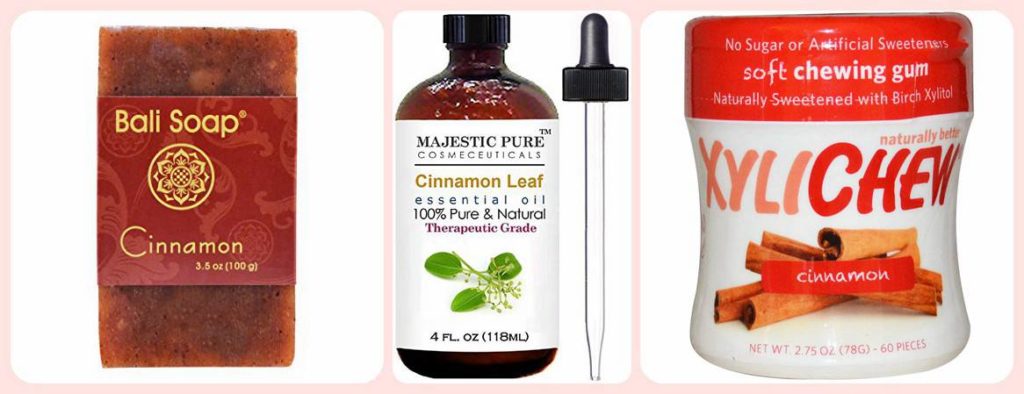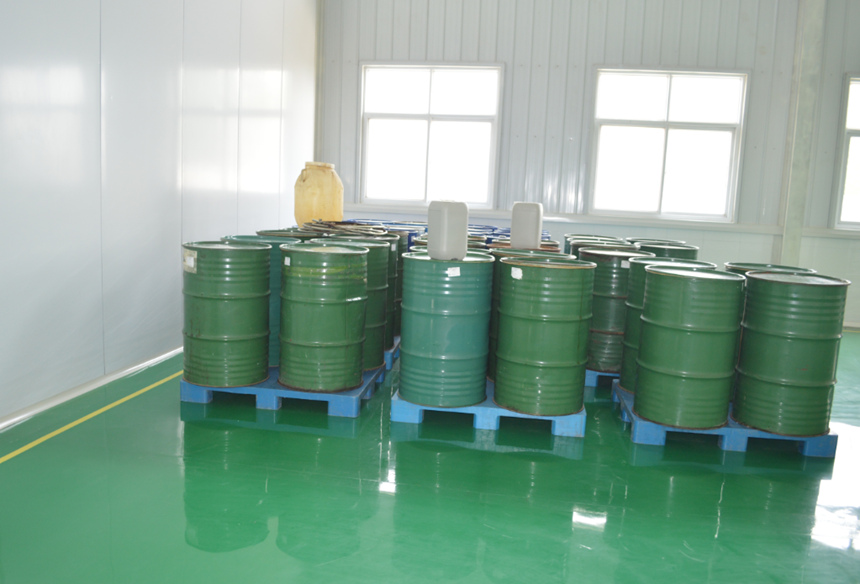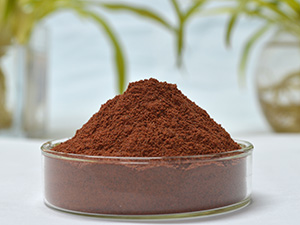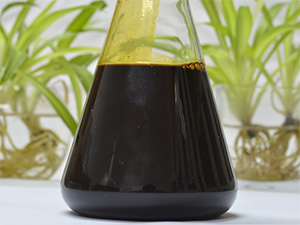1. Cinnamon Essential Oil Overview
Plamed can supply two kinds of Cinnamon Essential Oil, one from bark, the other from leaves and twigs.
Cinnamon leaf Essential Oil is steam distilled from leaves and twigs of Cinnamon. With strong aroma of cinnamon, it is clear yellow in color. This oil contains many different compounds but the most abundant (75% of the oil) is cinnamaldehyde, shown below. The aromatic components of it differs from the ones from bark. It is a great aroma enhancer and has antiviral, antibacterial and antifungal properties. It is widely used in beverage, Perfume, oral care, Home Care, Massage oil, Pesticide and etc. Cinnamon Essential Oil has ability of scavenging free radical and certain antibacterial activity. Its application in cosmetics industry is more and more popular

Plamed Cinnamon bark essential oil is manufactured by supercritical CO2 process. The better warming and Circulation Stimulating effect makes it perfect for Therapeutic purpose. The deeper, longer-lasting scent of cinnamon bark essential oil makes it first choice for perfume houses.
| Product Name | CAS Number | INCI Name | |
| Cinnamon Essential Oil | 8007-80-5 | CINNAMOMUM CASSIA LEAF OIL | |
| Product ID | Specification | Minimal Package | Minimal Order Quantity |
| PMJY0201 | Special purpose | 1KG | 1KG |
| Main Constituents: | Cinnamaldehyde | CAS number: | 104-55-2 |
| Molecular formula: | C9H8O | Molecule weight: | 132.16 |
| Molecule structure: |  |
||
Cinnamon Leaf Essential Oil VS Cinnamon Bark Essential Oil
| Cinnamon Leaf Essential Oil | Cinnamon Bark Essential Oil | |
| Color | Lighter | Darker |
| Scent | Lighter, Less-Intense | Deeper, Longer-Lasting |
| Taste | Less | Spicier, Sweeter, And Stronger |
| Price | Less Expensive | More Expensive |
| Cinnamaldehyde Content | Lower | Higher |
| Usage | Low-End Products | High-End Products |
2. Botanical source: Cinnamon cassia
Cinnamon (Cinnamomum cassia) belongs to Lauraceae family. It is a perennial plant. Cinnamomum evergreen trees, and no whit cinnamon, cinnamon. Cinnamon is native to southern Vietnam and eastern foothills of Himalayas. It is mainly distributed in China in Guangxi, Guangdong, Fujian, Yunnan, especially in Guangxi. Foreign production areas are Vietnam, Laos, Indonesia and other places. Cinnamon bark has been widely used as an important medicine and food seasoning for a long time. The bark can be used as carminative, aromatic stomachic, corrigent, astringents, etc. As a spice, cinnamon powder is mainly used as seasoning for meat cooking, as well as for pickling, dipping wine and baking food such as bread, cake and pastry. It is also one of main raw materials for making allspice.

3. Cinnamon Essential Oil Manufacturer Specification
| Product Name | Specification |
| Cinnamon Leaf Essential Oil | 75% Cinnamaldehyde |
| Cinnamon Leaf Essential Oil (Water Soluble) | 25% Cinnamaldehyde |
| Cinnamon Bark Essential Oil | 80% Cinnamaldehyde |
| Cinnamon Bark Essential Oil (Water Soluble) | 25% Cinnamaldehyde |

Cinnamon Leaf Essential Oil Technical Data Sheet
| Item | Specification |
| Assay | Cinnamaldehyde ≥75% GC |
| Appearance | Liquid |
| Color | Yellow |
| Odor | Characteristic fragrance of Cinnamon |
| Relative density (20℃/20℃) | 1.025~1.045 |
| Refractive index (20℃) | 1.562~1.582 |
| Heavy Metals (as Pb, mg/kg) | ≤10 |
| As (mg/kg) | ≤3 |
4. Cinnamon Essential Oil Manufacturer Process Flow Chart

5. Natural Cinnamon essential oil VS Synthetic Cinnamon oil
In order to get more profit, Some suppliers blend cheap Synthetic Cinnamon oil with Natural Cinnamon essential oil. They usually sell their product at a lower price because the cost of their products is much more lower.
Natural Cinnamon essential oil with Synthetic ones or simply Synthetic Cinnamon oil occupies part of the market for their low price. Plamed has made the HPLC chromatograms to help our customers tell the difference between Natural & Synthetic .
Synthetic Cinnamon oil is made simply by Chemical synthesis. The price is extremely low, ranging from $2 to $8. Cinnamaldehyde is its main content (95-99%). It is widely used in Animal feed and pesticides for its Antibacterial and Antifungal property. Solvent Residue makes it unsafe for food purpose, but the low cost makes it flow in food area.
| Natural Cinnamon essential oil | Synthetic Cinnamon oil | |
| Source | Naturally distilled from leaves and twigs of Cinnamon | Chemical synthesis |
| Price | USD42/KG ~ USD60/KG | USD2/KG ~ USD8/KG |
| Compound | 75%-80% Cinnamaldehyde(the rest is Cinnamaldehyde derivative) | 95%-99% Cinnamaldehyde |
| Solvent residue | NO | Much |
| Safety | Safe | Unknown |
| Effectiveness | High | Unknown |
| Application | Cosmetic, medical and food industry | Mainly for animal feed and pesticides |

6. Cinnamon Essential Oil Benefits
- Antimicrobial activity
Cinnamon oil contains various chemicals that are believed to be responsible for cinnamon’s antifungal and antibacterial effects. Important among these compounds is cinnamaldehyde. Studies have shown that it has an amazing ability to treat external as well as internal infections. This applies to Escherichia coli bacteria and Candida albicans fungus. When sprayed in the air, it kills almost 99% of the bacteria circulating with the air within a dozen minutes.
- Antioxidant
Cinnamon essential oil exhibits potent antioxidant properties. These properties make it an ideal remedy for skin diseases, acne and even potentially fatal conditions like cancer. Antioxidants help purge cancerous cells and damage-inducing free radicals from your body. It can also be used in food as a natural substitute for synthetic antioxidant, which is proven to be very bad for health.
- Indigestion
Cinnamon is used in many recipes. Apart from imparting flavor to your food, it is an effective remedy for treating stomach problems like indigestion, nausea, vomiting, upset stomach, diarrhea, and flatulence. As an effective carminative, cinnamon essential oil helps reduce gas from the stomach and intestines. According to The FDA (Food and Drug Association) cinnamon reduces acidity, combats diarrhea, indigestion, nausea, and other related stomach disorders.

- Improves Blood Circulation
Cinnamon helps improve blood circulation. Cinnamon contains blood thinning compounds that enhance blood circulation. Better blood circulation means lesser pain and more oxygenation. This property also benefits people who suffer from arterial diseases, joints stiffness, headaches and painful menstruation.
Including a few drops of cinnamon essential oil in the hair mask promotes proper blood circulation in the scalp by providing vital nutrients to hair follicles, thus promoting hair growth
- As An Insect Repellent
Studies show that cinnamon leaf essential oil is one of the most powerful anti-insect solutions. The naturally sweet and spicy aroma does not affect the human beings but is fatal to the mosquito larvae.
- As Fragrance
Cinnamon essential oil is used in a perfumes owing to its addictive aroma. Cinnamon essential oil features in chewing gums and other mouth freshener products. It helps promote tooth health and reduces bad breath.
7. Cinnamon Essential Oil Application
For topical use only, need to be diluted with a carrier oil before use.

| Application | Form | Purpose |
| Daily Chemical Industry | Oral care products (chewing gums, mouthwashes, toothpaste and breath mints), soap, shampoo, bath cream, Air freshener | Antibacterial
Breath freshener Aroma Enhancer |
| Flavor And Fragrance Industry | Food Flavour, Daily Use Chemical Essence | Aroma Enhancer |
| Medical Industry | Massage Oil | Relaxing
Stimulating Warming |
| Food Industry | Meat products, baked goods, chewing gum, chocolate, candy, soft drinks, tobacco | Aroma Enhancer
Flavoring Natural Preservatives |
| Pesticide | Insect Spray | Insect Repellant |
Cinnamon essential oil application cases in cosmetics:
| Country | Brand | Product |
| New Zealand | Karen Murrell | Natural Organic Lipstick |
| China | MEKOO | Facial Massage Essential Oil |
| Suyar | Smoothing Cream | |
| France | SAMPAR | Prodigal Pen |
| Ann Jema | HUILE DE MASSAGE TERDIGEARSYL | |
| SENTEALES | Precious Aromas |

8. Cinnamon Essential Oil Reference Formula
Skin massage essential oil:
| Ingredient | Content(%) | Ingredient | Content(%) |
| Cinnamon essential oil | 1.2 | Lavender essential oil | 5.2 |
| Tea tree essential oil | 4.9 | · Cypress essential oil | 0.9 |
| Camellia oil | 50.1 | · Marjoram essential oil | 1 |
| Jasminum essential oil | 0.7 | Sandalwood essential oil | 0.5 |
| Bergamot essential oil | 0.7 | Lemongrass oil | 1.1 |
| Grape seed oil | 24.9 | Vanilla essential oil | 0.8 |
| Beryl essential oil | 0.6 | Rosemary essential oil | 1.2 |
| Wormwood oil | 1.2 | ||
Breast massage essential oil:
| Ingredient | Content(%) | Ingredient | Content(%) |
| Cinnamon essential oil | 0.6 | Aloe essential oil | 8.1 |
| Angelica essential oil | 4.1 | Bergamot essential oil | 2.6 |
| Saffron oil | 0.6 | Peppermint essential oil | 1.9 |
| Geranium essential oil | 1.2 | Rose essential oil | 0.9 |
| Lavender essential oil | 3.1 | Rosemary essential oil | 1.4 |
| Camellia oil | 73.6 | Foeniculum vulgare | 0.5 |
| Cananga odorata | 0.7 | Chamomile essential oil | 0.6 |
9. Cinnamon Essential Oil Safety Warning
- Other than aromatherapy, carefully dilute with a carrier oil. Using the product without proper dilution can lead to burns and skin sensitivity. For topical use, rub a very small amount on the inside of your elbow area to test for any allergic reaction before use.
- Keep out of the reach of pets. Essential oils can be potentially toxic to pets at certain concentrations. Cats can be especially sensitive to essential oils.
- Do not inhale the product directly from the bottle as it may cause irritation in the nasal passages.
- Avoid contact with eyes, keep out of the reach of children.
- If pregnant, consult with your health care provider before use.
10. Method for Quality Identification of Cinnamon Essential Oil
In the market, people often forge cinnamon oil mixed with rosin, fat oil, alcohol, kerosene, etc. The best way to check quality of cinnamon oil is to use a gas chromatograph. In the absence of the test condition, simple method can be used as follows:
- Put a few drops of cinnamon oil in clean water, stir constantly. If the water surface is film free, the quality of cinnamon oil is better.
- Put a drop cinnamon oil on a blank sheet of paper, heat baking. Make the oil evaporation, after evaporation, the paper surface without oil or other dirt, cinnamon oil is better.
11. Packing and Storage
In a cool closed aluminum/iron container away from light and source of ignition at max. 20°C.









